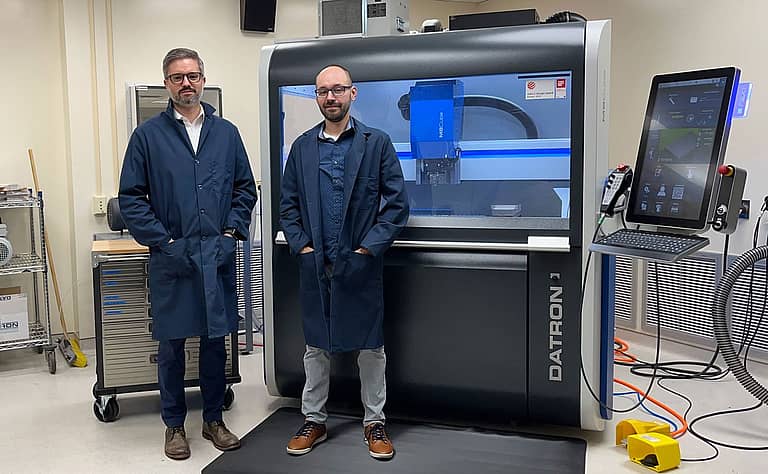The Forming of a Thermoforming Industry Leader
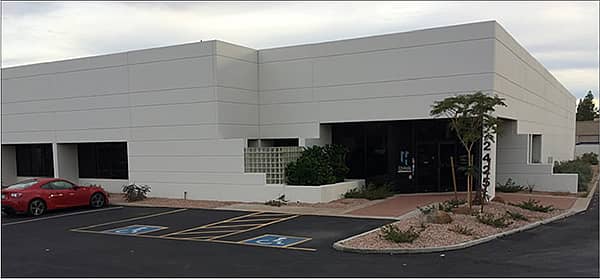
Hytech provides solutions for thermoforming, embossing and trimming thin film plastics. Their focus is primarily on thin film plastic parts requiring precise graphic registration. There are also non-graphic applications where the Hytech forming processes provide benefits over other traditional forming processes. Their patented technologies are utilized by OEMs in the Automotive, Appliance, Medical, Aerospace and Military industries.
Developing Patented Processes & Advancing Thermoforming and Match Metal Trim Dies
Today, Hytech has manufacturing facilities offering production services and tooling in the US and Europe and provides process development and equipment from its US headquarters in Phoenix AZ.
Hytech asked Rogers why the dome wasn’t made out of plastic. They found out that nobody was making the dome out of plastic. So, the first thing they did was invent a specialized thermoforming technology for embossing a dome in polyester and proceeded to sell millions of these domes to the Rogers Corporation and then went on to sell tens of millions of them to Hewlett Packard for their line of financial or scientific calculators. The production advantages (compared to the metal domes) on parts like membrane switches is that you could lay down 100 plastic domes in a single sheet whereas with the metal domes you had to pick and place all 100 into the location.
When Hytech started to sell these dome layers to membrane switch makers, the membrane switch makers said, “This is really great, but I’m having problems embossing my overlays to go over your domes.” So, the Hytech founders invented another forming technology called hydroforming where they embossed the overlays. At that point, they had a technology for embossing the overlay of a membrane switch and they had a technology for embossing the tactile layer that goes beneath the overlay.

Match Metal Trim Die Process: Hytech’s continuous development and advancement of patented technology has made them a global expert for 3-dimensional
match metal trim dies for thin-film plastic.
In the mid-90’s, the technology of in-mold decoration (IMD) or in-mold-labeling (IML) or film-insert molding (FIM) came along that takes a flat screen-printed plastic (typically polycarbonate) and forms it into the 3D shape of an injection mold. The decorative film is placed into the mold, the mold is injected, and when the mold opens, the part is decorated.
This coincided with the time when Hytech had the hydroforming and polydome processes. Customers came to them and asked them to emboss plastic for this new film-insert molding technology. They quickly found that neither of their processes were suitable for doing anything deeper than 1mm. The advantage of in-mold decoration is that you can do complex 3D parts with registered graphics. So, the founders, along with another newly hired engineer, developed Accuform − a high-pressure air-forming technology that allows them to do up to 50mm draw depth with registered graphics. Now, they can maintain the position, location, and size of different graphics over complex 3-dimensional surfaces.
This resulted in Hytech building parts for the IMD industry. They quickly found out that even though they could easily and continuously build the form tools, they struggled with building match-metal trim dies. At the time, nobody in the world built 3-dimensional match-metal cutting tools for thin-film plastics. So, Hytech had to develop that technology themselves.
Early on, they were outsourcing the hardened steel components to vendors who produced them with sinker EDMs. This led Hytech to believe that they needed to invest in a sinker EDM and bring the work in-house. So, along with the sinker EDM, they also invested in a wire EDM and all new software and started to build their own trim tools. As good as they got at the process, they knew that it would be much better if they could take another tenth off the perimeter of the hardened steel. They knew they couldn’t do it on their current machining centers because they couldn’t hold that kind of tolerance. Hytech CEO, Fred Himmelein, explains, “Over the years we got better and better and then maxed out at how much better we could get. We just couldn’t get the precision, the tenths that we wanted. We wanted to have a clearance between the mating hardened steel components of +/- .0003” but we just couldn’t get there with the sinker EDM and VMC equipment that we had. That’s what led us to DATRON.”
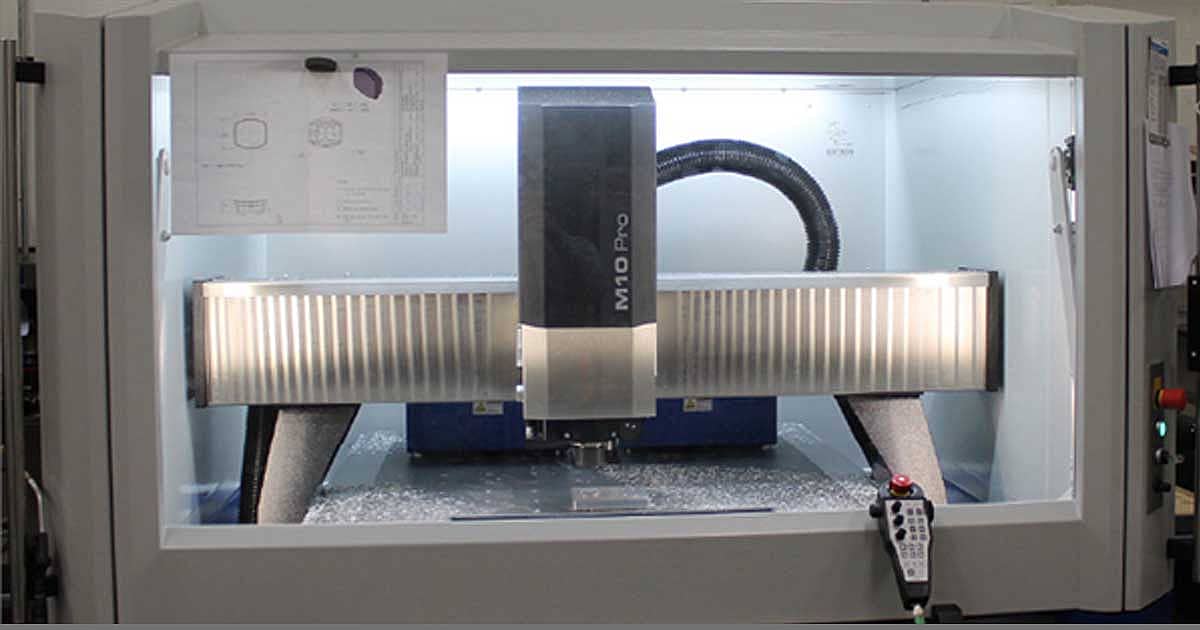
Researching Advanced Technologies for Thermoforming and the Perfect Surface Finish
The head of Hytech’s tool shop, Dave Blandino, did very thorough research and analysis of available machining centers and presented several different industry-leading solutions to the management team. Ultimately, it was decided that they would purchase a DATRON M10 Pro high-speed machining center. Himmelein reflects, “For a combination of reasons like precision, control software (NC programming), the cost of spindle maintenance, the support, and location of support, Dave broke it down to a matrix of about 10 or 12 elements, and it clearly showed us that DATRON was the right choice.”
But the choice to purchase the DATRON was not just based on this matrix. There was also a runoff or benchmarking process that each machine manufacturer had to complete – each producing the exact same part for a competitive comparison. While the ability to mill steel IMD applications was one of the parameters, surface finish for the forming side of their business was of paramount importance in this test. That’s because their high-pressure forming technology is so precise that any tool marks will be seen in the form sheet even if they have been sandblasted over. Himmelein explains, “You could look at a form core that we’re going to form over, it’s been sandblasted and it looks beautiful and the finish looks great, but when we form it, you’ll see a tool mark that you can’t believe.” At the time, a lot of the work they were doing was very precise 3-dimensional company logos over the top of a formed part. Clearly, the look of each logo was of great importance to the customer contracting them for the work. Himmelein elaborates, “That form part is the insert that goes into the injection mold. It’s a formed appliqué or film that goes into the injection mold and gets back molded so that when the mold opens the part is decorated. The cosmetics on these parts are absolutely critical and it’s as stringent a cosmetic requirement as exists in manufacturing.”
Hytech Tooling Manager, Dave Blandino, further explains their experience with the CNC vendors and the competitive benchmarking test, “We did some extensive research and gave several CNC manufacturers an opportunity to cut a part for us. I asked them to put a part in front of me that would sell their machine and nobody came close to the part that DATRON produced. I received parts from other machine tool manufacturers, and the quality did not meet my expectations. But within 2 weeks of sending DATRON the model, I flew to Germany, and not only was the hospitality great, but DATRON put a part in front of me that I really didn’t expect given the short timeframe. It was the best by far of what all the CNC vendors produced. When I came back to the States and showed the DATRON sample to the other vendors, they said, ‘Oh they polished this.’ and I said, ‘No they didn’t, that’s right off the machine!’ but they didn’t believe me. The fact is, we meticulously inspected each part on a RAM Optical comparator with 200+ magnification, so it’s not just what you see with your eyes or a magnifying glass. Our process shows everything and anything. In thermoforming, if you have even the slightest tool mark it’s going to show up in the film. So, it’s extremely critical to have the surface finish that the DATRON gives us.”
Aside from quality, there is a corresponding cost savings associated with eliminating secondary operations like handwork, sanding, and polishing and Himmelein credits DATRON with a resulting 90% reduction in hand time. There are also limitations to sanding as Blandino explains, “You can always do handwork with sandpaper, but when you have a tool that’s multiple cavity, you’re not going to sand the part the same way twice. If you have 15 to 20 cavities, you’re going to get variation and that variation translates into forming, trimming and molding. What we’re essentially doing is pulling the part off the DATRON and we’re not touching it and that’s our goal. The parts are ready to assemble into our tooling assemblies right off the machine. Sometimes a light bead blast texture is a customer requirement, but no sanding or polishing is needed.”
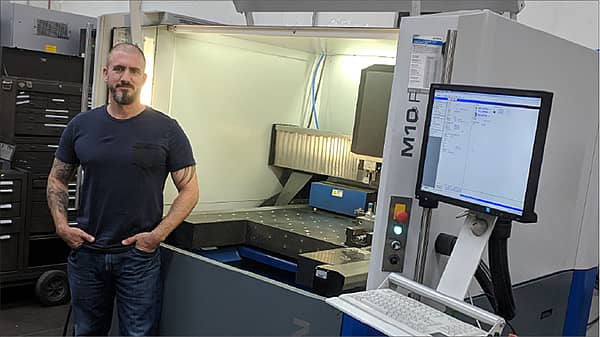
High Tolerance Required for Producing Match Metal Trim Dies (Stamping Dies)
So now, Hytech uses their wire EDM to make the A-side hardened steel component which represents their fixed tolerance. Then they fabricate the B-side hardened steel component which is the mating component to the A-side piece. They typically leave the die core between .0005” and .0008” heavy and they use the DATRON M10 Pro to take a tenth of at a time until it fits. Himmelein says, “This is where the DATRON really shines because we can do a tenth at a time relatively quickly, open the door leaving everything mounted and test our fit and if it’s not there, we close the door and run another tenth.”
The combination of the wire EDM and the DATRON machine has truly made the difference for Hytech Forming and they have become the global expert for 3-dimensional match metal trim dies for thin-film plastic.
Blandino explains, “We used to have to sub out these components to shops that had the equipment to be able to handle that and since we purchased the DATRON we brought all that work in-house. We’re doing light finish passes to hold tight tolerances on our heat-treated A2 steel parts. These parts are tooling components that we design and fabricate here. One of the visions of our company is trimming. We’re into thermoforming of thin-film plastics, but the other side of that is that we need to trim the plastic once it’s formed and these trimmed shapes have to fit exactly into the mold with tight tolerances of +/- a couple thousandths of an inch. But, in order for the trimming to actually occur, the tolerances of the components we machine have to be +/- a couple tenths of an inch. These are the components we’re using to build our trim dies with.”
Blandino also credits the DATRON technology with adding flexibility to their design process. “It’s allowed us also to design our tooling a lot more efficiently. Before, the only equipment we could use to maintain those tight tolerances was our EDM wire. Of course, the problem with EDM wire is that everything is not a through pocket. So, that limited our design flexibility because we had to design around that limitation. With the DATRON we’re able to design more freely and do things the way we wanted to do them.”
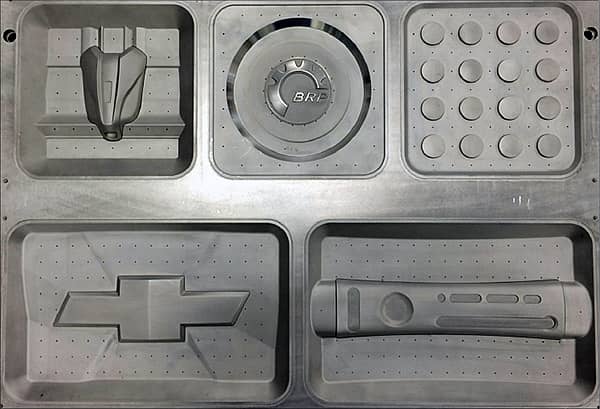
The DATRON M10 Pro has become so critical to the quality of their end product and Blandino says that they are reminded of this any time the DATRON is backlogged with work and they are forced to move work to other CNC equipment. “Even with the handwork, you can’t come close to the surface finish that we get on the DATRON. Plus, we’re maxed out on spindle speed at 15k 12k and 10k on the other CNC equipment, so we have to cut our feeds by a good 100%. Because of the spindle vibration and backlash on the ballscrew with our other machining centers, the finishing we have to do is heavy sanding. That’s why I’m really pushing for a second DATRON machine. We use the other machining centers as our ‘Op One machine’ where we rough all the meat off the back and all the non-critical surfaces. These machines handle that task well.”
Opening Doors to a New Revenue Stream and a 25% Increase in Annual Revenue
CEO, Fred Himmelein gives credit to DATRON for the quality it’s helped Hytech to deliver to a wide range of industries including automotive and aerospace. Himmelein is also impressed with the flexibility of the DATRON and the other ancillary processes that it’s impacted and improved since it was installed. For example, they have a project that they’ve been doing for a customer for a decade where they cut .25” acrylic with a CO2 laser which does a great job producing a beautifully polished edge. But, after a decade the customer decided that they wanted to switch materials and use polycarbonate to reduce the risk of damage to the parts through their lifecycle. Since .25” polycarbonate cannot be cut with a laser without it burning and presenting a health hazard, they had to find an alternative process. So, they did a test cut on the DATRON M10 Pro using a DATRON end mill that is specifically designed for milling acrylic. The result was a big win for both Hytech and their customer. The DATRON actually cut the parts out of polycarbonate faster than the laser had cut them out of acrylic, the surface finish was comparable, and the customer was able to switch to the preferred material.
The DATRON M10 Pro is compatible with a wide range of CAM software packages and Hytech has invested in several of them and has done extensive testing to maximize performance and surface finish. Blandino says, “We’ve probably done more software testing than most shops. We use the DATRON software’s contour smoothing, but it’s also a combination of the dynamics and the programming strategies that all contribute to a perfect surface finish. We’ve done some testing with different programming software including SolidCam, SOLIDWORKS, FeatureCAM, Fusion 360 and PowerMill and we’re comparing apples to apples with different cutters, speeds, and feeds. So, we use a combination of what the software has to offer combined with what DATRON has to offer, and we came up with a formula for the best surface finish you can achieve with 3-axis milling. Fusion has a really good post for DATRON and provides excellent surface finishes in conjunction with Dynamics and Contour Smoothing that the M10 has to offer. Currently, our primary CAM
solution lies with Autodesk. Testing is done continuously, and the DATRON compliments all software’s post processors extremely well.”
They have to be tight-lipped about it, but Hytech could tell us that they are just entering an existing industry with a new way of making components that requires extremely precise machining. Manufacturers within that industry actually came to Hytech because they have a photo of their DATRON M10 Pro on their website. During the latest round of test cuts for this industry, the part ran for over 200 hours. That’s because the part requires very small cutters taking a small stepover to do 3D contouring and can even go dozens of hours without a tool change. With the machine currently running 24/7 adding and additional M10 Pro is imminent. This new business is projected to result in a 25% increase in revenue for the company.
Thermoform Mold Making
Located in Ontario, Canada, Hytech Forming Systems is an international supplier of thin film plastic converting technologies and has been inventing new processes, equipment and tooling technology for more than 30 years.
Hytech Forming Systems needed a machine that was capable of providing very precise tolerances that could not be achieved with the sinker EDM and VMC equipment they already had.




